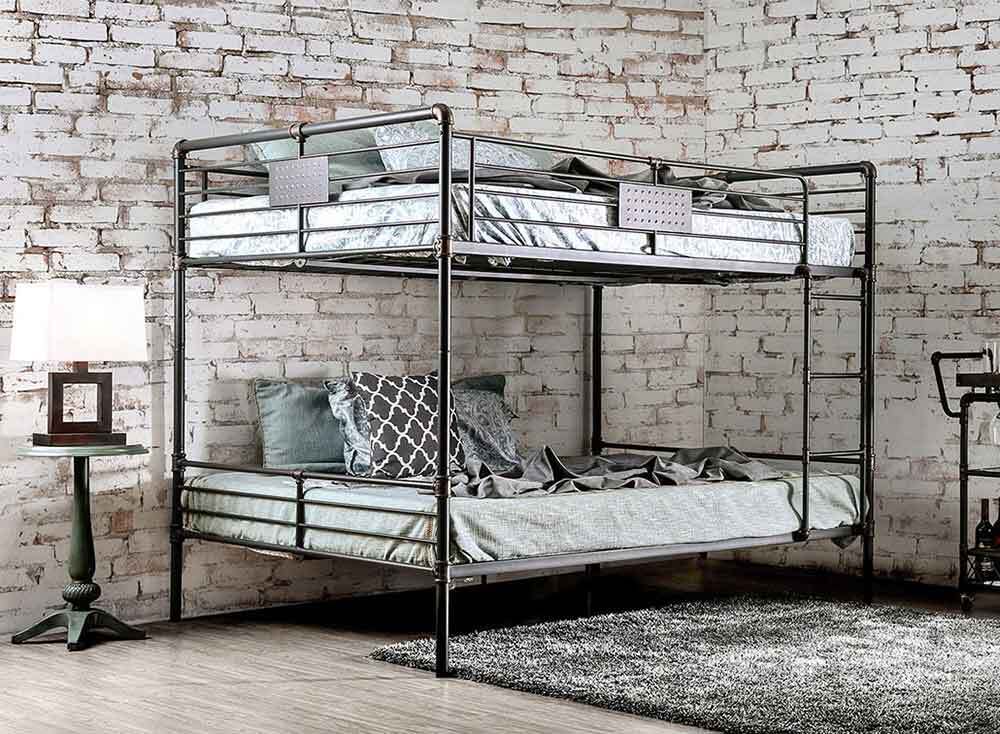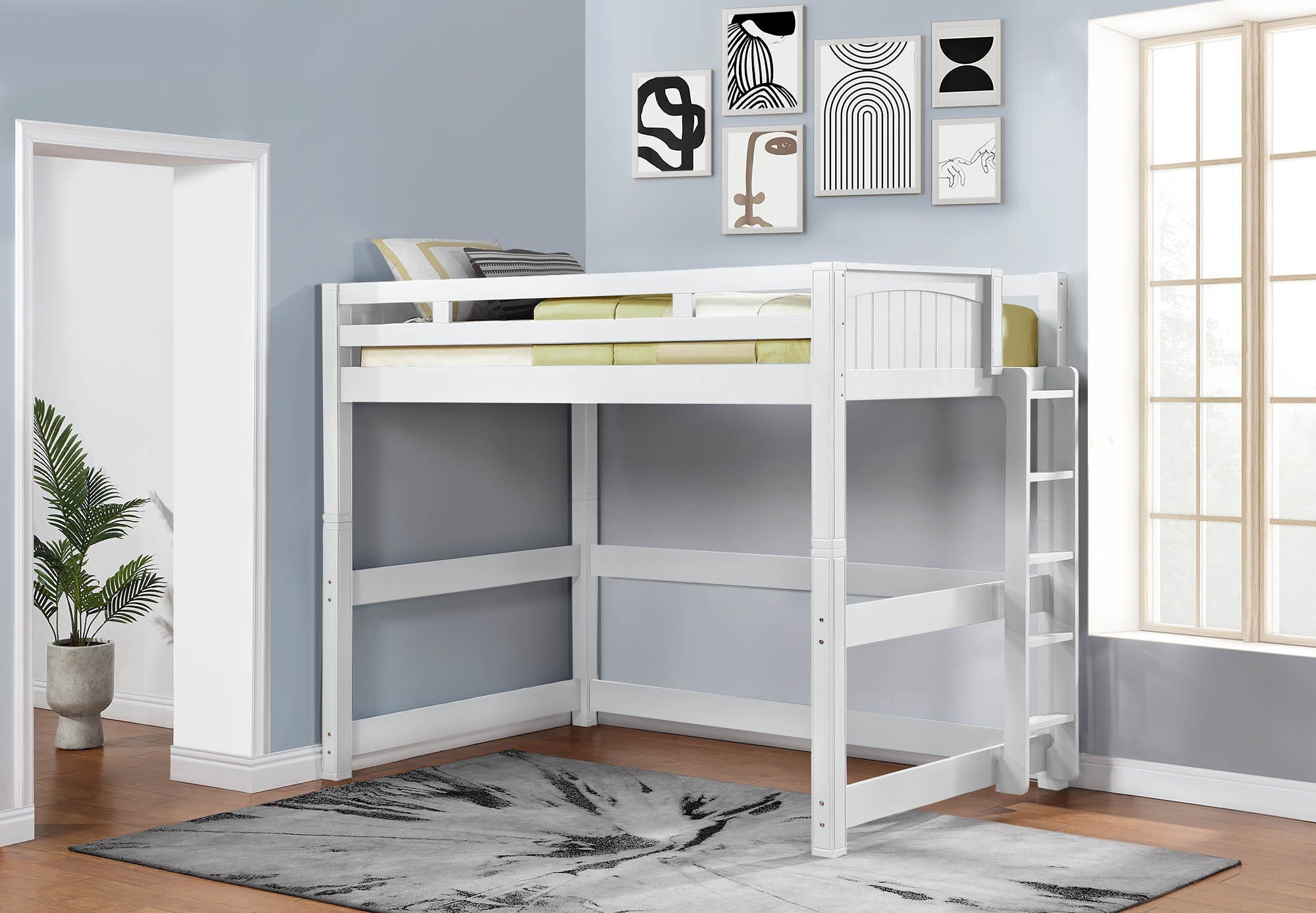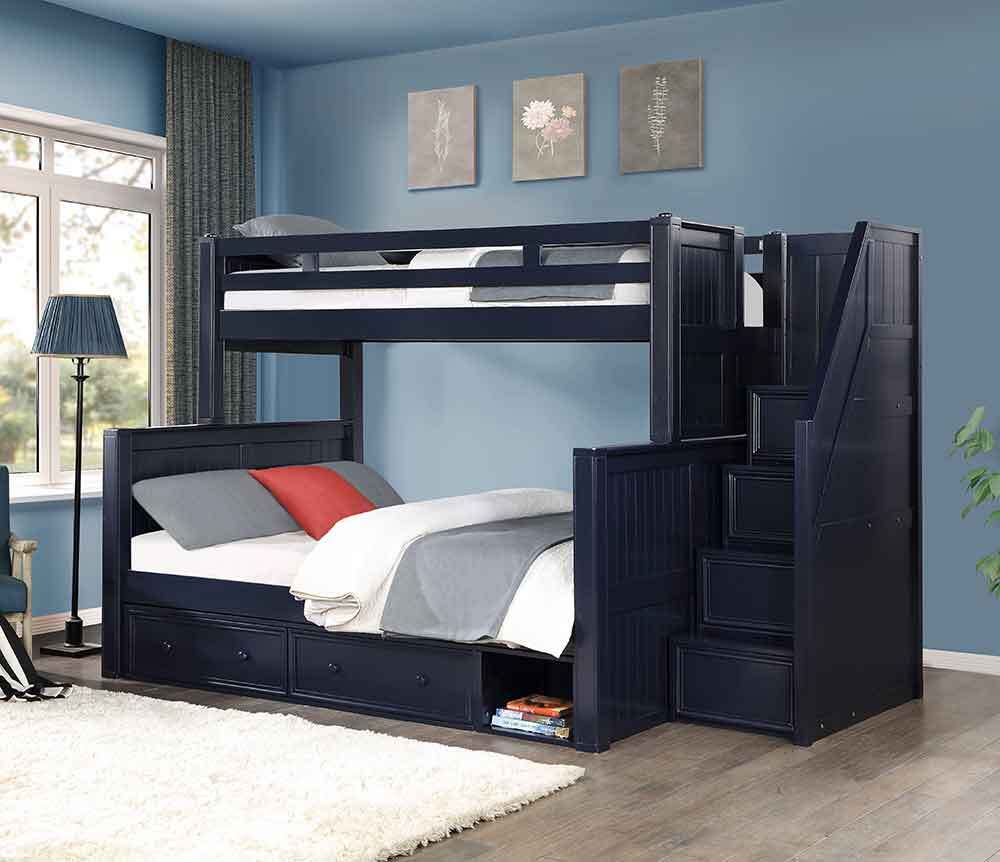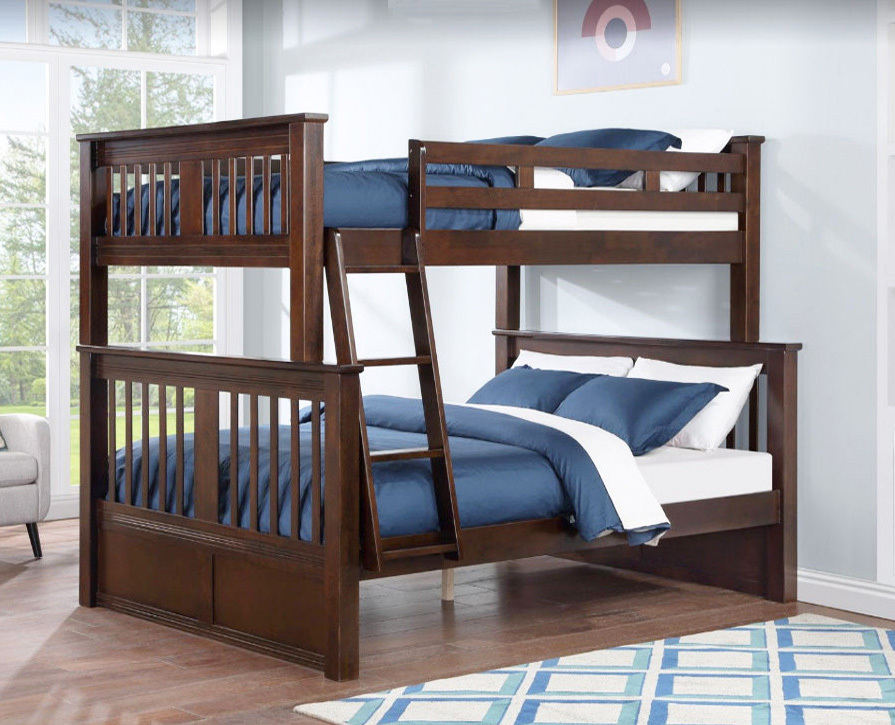What Are the Disadvantages of the Top Bunk?
Posted by UPW on Mar 25th 2025

Safety is an important consideration in any sleeping arrangement, especially when elevated sleeping surfaces are involved. While bunk beds provide a practical solution for maximizing space, the top bunk comes with specific challenges that must be addressed to ensure a safe and comfortable experience.
Whether you’re a parent setting up a child’s bedroom or an Airbnb owner furnishing a rental, understanding the potential drawbacks of the top bunk is essential. From safety concerns and age restrictions to comfort issues and fall prevention, here’s what you need to know before choosing or using a top bunk.
Is It Safe to Sleep on the Top Bunk?
Yes, top bunks are safe when designed and used correctly. Bunk beds that meet safety regulations feature secure guardrails and have a sturdy frame provide a stable sleeping arrangement.
However, like any elevated sleeping surface, they require proper use and awareness of potential risks. Below, we’ll discuss common safety concerns and the standards that ensure top bunks remain a secure option.
Common Safety Concerns with Top Bunks
While top bunks are built for stability, certain risks must be considered to ensure they are used safely. Issues such as access difficulty, weight restrictions, and emergency evacuation can impact the safety and practicality of the top bunk. Understanding these challenges helps in choosing a bunk bed that minimizes risks.
- Difficult Access – Unlike bottom bunks, getting in and out of the top bunk requires climbing a ladder or stairs. This can be challenging for young children, individuals with mobility concerns, or anyone who may need to use the restroom at night.
- Weight Limitations – The top bunk typically has a lower weight capacity than the bottom bunk. Exceeding the recommended limit can compromise the bed’s structure, increasing the risk of collapse or frame damage.
- Fire Safety and Emergency Exits – In an emergency, evacuating from a top bunk may take longer than from a lower bed. Limited access and the need to climb down a ladder can slow response time, making it essential to position the bed in a way that allows quick exit if needed.
While these concerns highlight potential risks, most can be mitigated with careful bed selection and adherence to safety guidelines. Choosing a bunk bed with secure access points, verifying weight capacity, and ensuring a clear exit path can significantly enhance the safety of the top bunk.

Safety Standards and Certifications
Bunk beds must meet strict safety regulations to reduce risks such as falls, entrapment, and structural failures. Federal and industry standards provide guidelines to ensure that bunk beds, particularly the top bunk, offer a secure sleeping space.
- Consumer Product Safety Commission (CPSC) Standards – U.S. regulations (16 CFR Part 1513 for children’s bunk beds and 16 CFR Part 1213 for adult models) require guardrails on both sides of the top bunk, ladder security measures, and proper spacing to prevent head and neck entrapment. The top bunk must have a guardrail extending at least 5 inches above the mattress, and openings must not allow a 0.22-inch gap between the rail and the bed’s end.
- ASTM International Standards – The ASTM F1427 safety standard outlines additional design and stability requirements, including load-bearing capacity, impact resistance, and guardrail strength. It also establishes guidelines for the spacing of support slats to prevent mattress sagging and ensure overall bed stability.
- General Certificate of Conformity (GCC) and Children’s Product Certificate (CPC) – The CPC is required for bunk beds intended for children 12 and under and ensures compliance with lead content limits, small parts bans, and structural integrity tests conducted by a CPSC-accepted third-party laboratory. For adult bunk beds, a GCC confirms that the product meets all applicable federal safety laws through reasonable testing programs.
When purchasing a bunk bed, always check for labels indicating compliance with these standards. Investing in a certified model ensures long-term durability and a safer sleeping environment.
What Age Is Safe for the Top Bunk?

The Consumer Product Safety Commission (CPSC) states that children under six years old should not sleep on the top bunk due to a higher risk of falls and difficulty climbing safely. At this age, children are still developing coordination, balance, and spatial awareness, making it harder for them to navigate ladders and maintain stability while sleeping.
- Ages 6–12 – Children in this range can safely use a top bunk as long as the bed has secure guardrails on both sides and a stable ladder or staircase. Parents should remind them to use the ladder properly, avoid jumping from the top bunk, and refrain from roughhousing, as these are common causes of falls.
- Teenagers – Older kids may prefer the privacy of a top bunk, but they should check the bed’s weight capacity to ensure it can support their growing bodies. Taller teens may also find the space restrictive, especially if the bunk bed has limited headroom.
- Adults – Adult bunk beds are built to accommodate adults, but not all models are suitable. Before choosing a top bunk, you must verify the weight capacity, check the ladder or stair stability, and ensure there is enough head clearance to sit up comfortably.
Selecting a top bunk based on age and physical ability helps prevent accidents and ensures a comfortable sleep experience. Always assess the structural integrity of the bunk bed and make sure it aligns with the user’s needs.
Is It Possible to Fall Off the Top Bunk?
Yes, falling from the top bunk can happen if safety precautions are not followed. However, most accidents occur due to improper use, such as not using the ladder correctly, rough play, or using a mattress that exceeds the recommended thickness. By following essential safety guidelines, the likelihood of falls can be minimized.
Calculating the Optimal Guardrail Height for Top Bunk Safety
The effectiveness of a bunk bed’s guardrails depends on their height in relation to the mattress. If the rails are too low, they won’t provide enough protection; if they are too high, they may create gaps that pose an entrapment hazard. Proper measurement and installation are key to ensuring safety.
- Calculate the Total Guardrail Height Needed - To determine the ideal total guardrail height, add the mattress thickness to the required 5-inch guardrail extension. For example, if the mattress is 6 inches thick, the guardrail must be at least 11 inches tall (6-inch mattress + 5-inch guardrail extension). For an 8-inch mattress, the total height would need to be at least 13 inches. Keeping this calculation in mind ensures that the sleeper remains protected while still allowing easy entry and exit from the bed.
- Ensure Guardrail Gaps Are Safe - The ASTM F1427-21 standard states that gaps between guardrails and bed frame components must be small enough to prevent head entrapment. Additionally, CPSC regulations require that the gap between the guardrail and the nearest bed frame component should not exceed 0.22 inches to prevent entrapment risks. Regularly checking these measurements ensures your child’s bed remains safe and structurally sound.
Most falls from the top bunk happen due to human error rather than structural failure. Skipping the ladder, leaning too far over the edge, or exceeding weight limits can all contribute to accidents. Reinforcing safe bunk bed use and keeping all safety features in place ensures that the top bunk remains a comfortable and secure sleeping option.

How to Make a Top Bunk Safe
A top bunk can be a secure sleeping space when used correctly. Beyond meeting basic safety regulations, considering extra precautions tailored to the user’s age and sleeping habits can further improve safety. Below are key steps to reinforce the safety of a top bunk.
- Secure the Bunk Bed Frame – Ensure all screws, bolts, and joints are tightened regularly. Over time, movement from climbing and shifting weight can loosen connections, leading to instability. Check the frame at least once a month and re-tighten any loose fasteners.
- Use the Correct Mattress Size – A mattress that is too thick can reduce the height of the guardrails, increasing the risk of rolling off. Always follow manufacturer guidelines for the appropriate mattress thickness to maintain adequate guardrail coverage.
- Install Additional Handholds – Some bunk beds come with basic ladders that may not provide enough grip for younger children or adults. Installing additional handholds or choosing a bed with built-in staircases can improve accessibility and safety.
- Keep the Ladder or Stairs Clear – Climbing should be free of obstacles. Avoid placing furniture, toys, or other items near the ladder that could create tripping hazards or make access difficult.
- Reinforce the Guardrails – While most bunk beds come with standard guardrails, adding extra railings or reinforcing existing ones with stronger fasteners can provide additional security, particularly for restless sleepers.
Even the most well-constructed bunk bed requires proper maintenance and responsible use to remain safe. Periodically inspecting for loose parts, ensuring the correct mattress height, and reinforcing accessibility features all contribute to a safer experience.
While top bunks come with potential risks, CPSC-certified beds significantly reduce the likelihood of accidents. With the right precautions, bunk beds remain a practical and safe sleeping option for both children and adults. At Just Bunk Beds, we offer high-quality bunk beds built to meet strict safety standards—browse our selection today!

